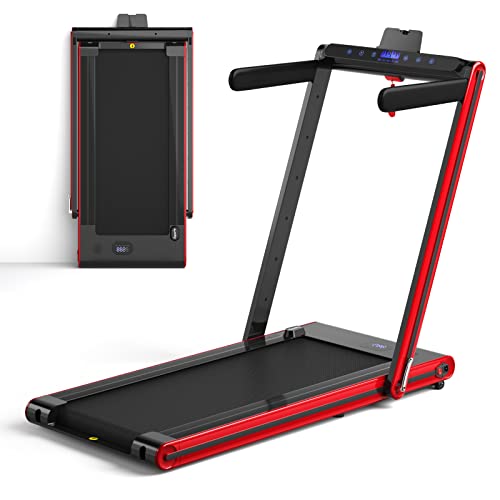The 9 Things Your Parents Teach You About Treadmill Electricity
페이지 정보

본문
 treadmill electricity (new content from Posteezy)
treadmill electricity (new content from Posteezy)Although treadmills don't consume the same amount of electricity as other appliances, such as air conditioners and washing machines, they still contribute to the overall energy bill of your home. It's crucial to know how treadmills use energy to make informed choices about the purchase.
Find your treadmill's wattage rating in the user's manual or on the label. Then multiply the wattage number by the amount of time you're using it per week.
Origins
Treadmill electricity is a component of your overall power usage when using fitness equipment. Some factors influence how much your treadmill will use in terms of the size of its motor as well as the speed you exercise at. You can lower the amount of energy used by your treadmill by turning off the machine when you're not exercising and maintaining it regularly to ensure optimal performance. You can also cut down on your treadmill's energy consumption by running on an incline instead of flat.
Treadmills are all treadmills electric used for both working and leisure. Originally, they served as a form of punishment for prisoners who were sentenced to labor. They would constantly walk on the hamster wheels, generating power to run machines that ground grains or powered water pumps. However despite their utilitarian ancestry they were not without their faults. For example, prisoners often suffered from heat stroke and other health issues as a consequence of the exhausting work required on machines.
Modern treadmills aren't just machines for use in the home. They can produce energy while they are being utilized. Treadmills like the Verde from SportsArt harness the energy created as you run or walk on the treadmill and convert it into electricity that is stored in batteries. When the battery is fully charged it can be used to use this electricity to power a small appliance like a fan or light.
The type of treadmill that you choose will have an impact on the amount of electricity it requires. For instance, treadmills made for intense workouts have larger motors, which require more power to move the belt. The speed of the treadmill as well as the incline setting will also impact the power consumption of your treadmill. Exercises that are intense will require more electricity so you should be aware of the treadmill's usage to ensure it doesn't go over your budget.
Do you have the capacity to get enough energy from a treadmill exercise to power an appliance? Yes however, it won't be very much. A trained athlete can produce up to 3/4 HP, which is roughly 500-600 watts in standard electrical terms. This might suffice to power a small fan or even laptops however it's not enough for a household or commercial facility.
Motors
If your treadmill is electric treadmill, it depends on motors to convert electrical energy into kinetic energy required to move the belt. The majority of treadmills with folding electric treadmill motorized running machine motors have two separate motors -the drive motor and an incline. Each one will have an impact on your workout experience and longevity, so make sure to read the specifications for each component prior to purchasing your treadmill.
The horsepower (HP) is the most important spec for treadmill motors. This measure indicates how much power the motor can create at its peak. While it's easy to get lured in by an attractive HP rating, think about a better measure: continuous duty (CHP). This is the length of time that a motor can perform at its peak without overheating. Treadmills that have an increased CHP are generally more durable and last longer.
Consider your budget and intended use before deciding on the kind of motor you want to purchase. In general, motors of higher quality and larger size will cost more to purchase and operate. This extra cost can however be offset by reducing your energy bills. If you're considering a time-of-use-rate plan which charges different rates throughout the day, it's even more important to concentrate on the treadmill's energy usage.
Treadmills require a minimum of 15 to 20 amps in order to function properly, so it's important to ensure that you don't share your home's power with other appliances that are on the same circuit. This could cause your treadmill to to trip a circuit breaker and it could damage it. Instead, choose a dedicated outlet for your treadmill, and make sure it's wired properly.
The motors of your treadmill use AC/DC power to rotate the crank that drives the belt. The AC motors are more expensive, but they are more smooth and provide faster response to changes in speed or incline. A treadmill equipped with a top-quality DC motor will also reduce noise levels and maintenance requirements. If you're not sure about the type of motor you should buy electric treadmill, examine the warranty and compare models with similar features.
Electronics
The electronic components of a treadmill are responsible for controlling the running of its motor. Switches, potentiometers and PCB electronic components are used to regulate the motor's speed and force. The treadmill can be used to simulate walking, running and jogging workouts. Treadmills that have incline options can also alter the speed and force of the motor to simulate running uphill.
The size of the treadmill's motor and the settings for the console could all impact the amount of electricity consumed. Heavy users exert more force on the treadmill, requiring more power to drive the belt. The treadmills that simulate uphill running consume more energy than treadmills that don't have this feature. The energy consumption will also increase if you increase the settings on your console.
In general, treadmills consume more energy when users are running faster and for longer durations. A calorie counter or other features on a treadmill may be a factor in an increase in energy consumption.
It is possible to generate enough kinetic energy from walking to power a cell phone, but the process will take longer than simply charging the phone directly with an USB cable. However the system can be used with any standard phone, regardless of the operating voltage.
Owners of treadmills can reduce the energy consumption of their treadmill by shutting off the treadmill when it is not in use. They can also check the machine for signs of wear and tear, which may cause it to consume more energy than it needs to.
You can also reduce the energy use of your treadmill by running it at "off-peak hours" which are usually overnight. These are times when electricity prices are lower. This can help save money, especially when the homeowner is on a time-of-use plan which charges different rates for usage at different times of the day. In addition homeowners can purchase solar panels to generate their own clean electricity. This will drastically cut down on dependence on the grid and fluctuating electricity prices. This can result in significant financial savings in the long time for homeowners.
Exercise
Treadmills and elliptical machines permit you to walk, jog or run indoors, enabling you to stay fit when the weather isn't your style. These pieces of fitness equipment require electricity to drive their motors and to operate their displays, but the amount they consume will differ based on the frequency and how long you workout. You can estimate treadmill energy consumption by finding its wattage rating, typically found on the user's manual or machine label. Multiply that number by the average amount of time you use it each day, and then divide it by the number of days in a month. This will give you the daily energy usage in Kilowatt-hours (kWh). Then multiply the number of kWh used by your utility provider's cost-per-kilowatt-hour rate to figure the total cost of operating your fitness equipment.
Other factors can affect the treadmill's power consumption in addition to the speed and incline setting you choose. The higher speed you run at will require more power from the treadmill's motor, and using an incline setting simulates uphill running, which also increases energy consumption. The weight of the person using the treadmill also influences the amount of energy used since the motor has to be more efficient in moving the belt with a greater burden.
A treadmill that is well maintained can also decrease the amount of electricity required. Examine the lubrication on the belt frequently to ensure that it's properly oiled and replace damaged or worn bearings to avoid excessive wear and tear on the motor. If you are using the treadmill for prolonged periods of time, consider upgrading to a model with an energy-efficient drive system.
Most treadmills consume electricity even when they are not being utilized, so make sure to turn them off or at least unplug them when you're done exercising. If you have a treadmill with a high power, leaving it hooked in can increase your household's energy cost. You can reduce unnecessary energy consumption by using a smart plug or an energy-efficient treadmill to automatically shut off your treadmill. If you're looking to reduce static electric current between your body and the treadmill or elliptical frame put a humidifier in your workout space to increase the relative humidity.

- 이전글See What Key Spare Tricks The Celebs Are Utilizing 24.09.23
- 다음글10 Top Mobile Apps For Electric Foldable Treadmill 24.09.23
댓글목록
등록된 댓글이 없습니다.








